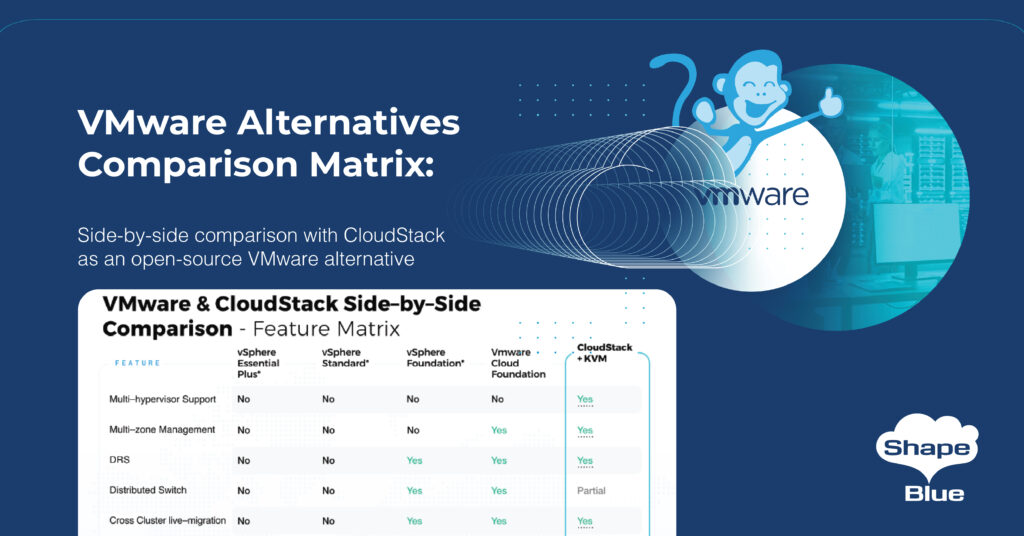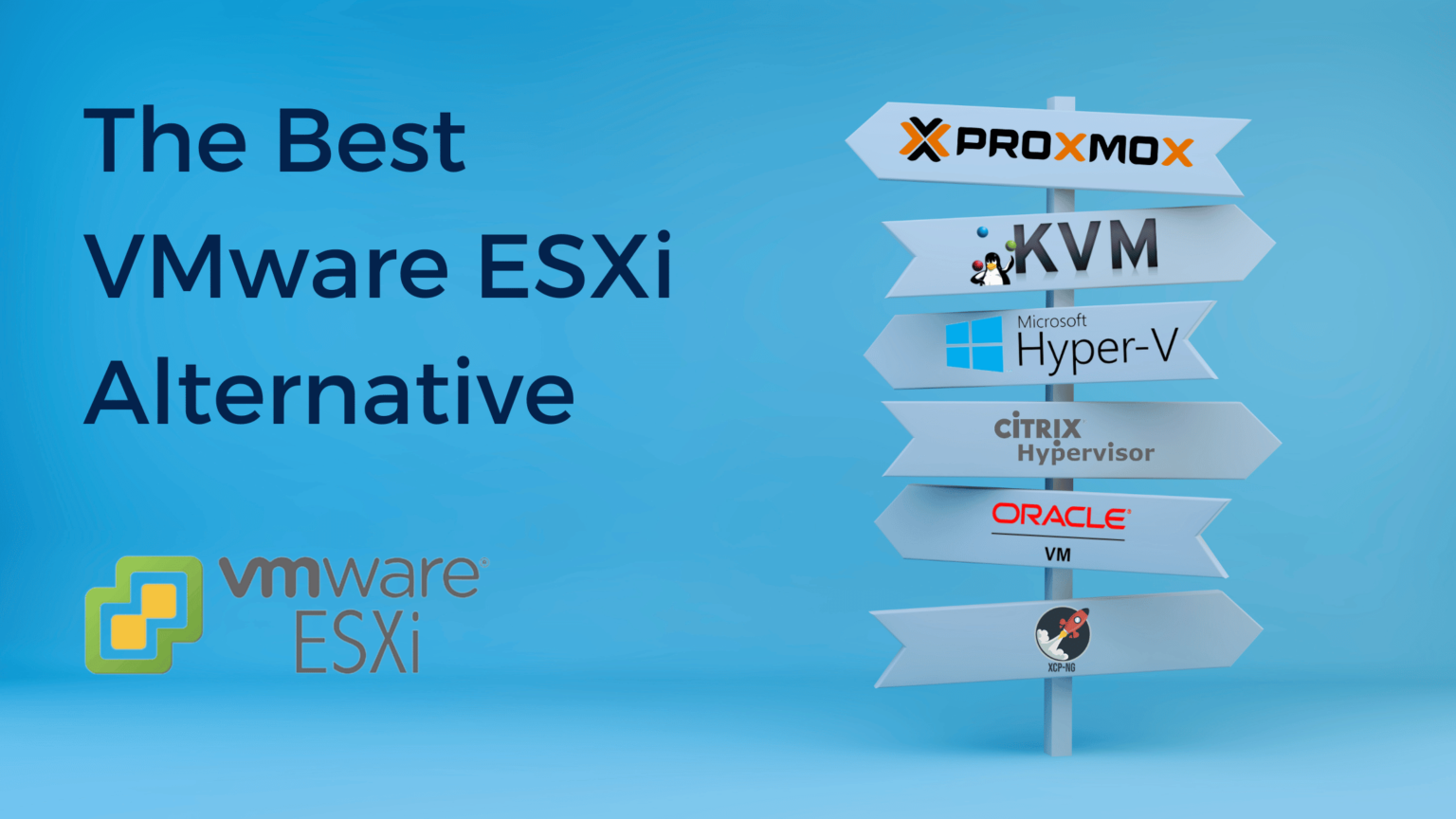Top VMware Alternatives In 2025: Find The Best Fit!
Are you questioning the future of your virtualization infrastructure? The landscape is shifting, and exploring VMware alternatives is no longer just a contingency plan; it's a strategic imperative for many organizations.
The virtualization world is in flux. VMware, once the undisputed champion, faces a rapidly evolving market. The recent acquisition by Broadcom has sparked considerable uncertainty, particularly around licensing costs and future product direction. This has ignited a significant migration trend, with IT departments actively seeking alternatives that can match VMware's performance and reliability, all while demanding greater cost-effectiveness. This surge in demand for alternatives underscores a critical need to re-evaluate your virtualization strategy. The question now isn't if you should explore alternatives, but when and which ones.
Choosing the right VMware alternative is a multi-faceted process, demanding a thorough understanding of your specific IT infrastructure, business objectives, and future scalability needs. The primary step involves assessing the compatibility of any potential solution with your existing hardware and software ecosystem. This due diligence is critical to avert integration nightmares that can derail projects and impact operational efficiency. Furthermore, evaluating the solution's feature set, ease of use, community support, and long-term viability are also important.
- Movies4u Where To Watch Download Free Movies Guide
- Uncut Indian Web Series Explore Bold Raw Stories Now
Heres a detailed table summarizing essential information for evaluating various VMware alternatives:
| Feature | Description | Considerations |
|---|---|---|
| Compatibility | Assessment of the alternative's compatibility with current hardware, software, and operating systems within your IT environment. |
|
| Cost | Detailed evaluation of licensing models, including upfront costs, recurring subscription fees, and potential hidden expenses. |
|
| Performance | Evaluation of the alternative's performance metrics, including CPU utilization, memory management, storage I/O, and network throughput, to ensure it meets your performance requirements. |
|
| Features | Understanding the range of features available, such as high availability, disaster recovery, live migration, and advanced management tools. |
|
| Scalability | Determine the ability of the platform to scale your infrastructure to meet future demands and handle increasing workloads. |
|
| Security | Examine security features such as data encryption, access control, and compliance with industry regulations. |
|
| Support and Community | Assessing the availability of technical support, documentation, and a supportive user community for troubleshooting and problem-solving. |
|
| Management Tools | Evaluate the ease of use and features of the management tools provided by each alternative. This includes the graphical user interface, command-line interface, and automation capabilities. |
|
| Integration | Explore the ability of the alternative to integrate with other systems and technologies within your IT environment. |
|
| Licensing | Understand the different licensing models, including perpetual licenses, subscription-based models, and open-source options. |
|
Proxmox Virtual Environment (VE) has emerged as a prominent contender, especially within the Linux ecosystem. It offers a robust open-source virtualization platform. Its advantages lie in its cost-effectiveness, ease of use, and comprehensive feature set, making it a compelling option for businesses of all sizes. Proxmoxs free nature for users and relatively lower enterprise costs presents a strong contrast to VMwares often higher licensing fees. While VMware has a significant market share (44.46%), the cost savings and flexibility offered by Proxmox are key differentiators that are attracting a growing user base.
However, the landscape of alternatives extends beyond just Proxmox. Red Hat OpenShift, with its robust Kubernetes-based container platform, is gaining traction as a VMware vSphere competitor. Kubernetes, in general, is increasingly viewed as a potent force in the virtualization arena, offering a modern, scalable approach to managing workloads. Then theres Microsoft Azure Virtual Machines, representing a seamless integration into the broader Azure ecosystem. For those with a strong Azure focus, its cloud integration and management capabilities make it a natural choice. VirtualBox remains a viable option for smaller deployments or for those seeking a free, easy-to-use solution for development and testing.
- Katmovies18com Your Guide To 18 Adult Movies More Discover Now
- Anastasia Kvitko Bio Career Facts About The Russian Model
It's not just about finding an alternative; it's about finding the right alternative. This involves a deep dive into the features, pricing, and unique advantages of each option. Organizations must consider aspects such as deployment and provisioning, resource management, automation capabilities, and pricing structures. For instance, if Azure-integrated services and management are a priority, Azure Virtual Machines or Azure Stack HCI might be the best fit.
Many IT professionals, including those who have relied on VMware since vSphere 4 and manage substantial ESXi server deployments, are actively reassessing their strategies. As VMware's costs climb without a corresponding increase in value, the rationale for exclusive VMware usage diminishes. This trend underscores the importance of conducting a thorough evaluation of all available options.
Choosing the best VMware alternative isn't just about cost savings; it's about future-proofing your IT infrastructure. With organizations placing a premium on flexibility, scalability, and agility, the move toward alternatives is driven by a desire to optimize resource allocation and reduce vendor lock-in. The best alternatives are those that offer a clear path for modernization, allowing you to adapt to changing business requirements and leverage the latest advancements in virtualization technology.
Key considerations include:
- Compatibility: Does the alternative work with your existing hardware and software?
- Cost: What are the total costs, including licensing and support?
- Performance: Can the alternative handle your workloads?
- Features: Does it offer the features you need, like high availability and disaster recovery?
- Support: Is there adequate support and a strong community?
As Managed Service Providers (MSPs) shift their focus, a clear understanding of how these alternatives compare is essential. Deployment and provisioning, resource management, automation capabilities, and pricing structures are all critical aspects to evaluate.
Below, we explore some of the best VMware alternatives:
| VMware Alternative | Key Features | Advantages | Disadvantages | Pricing Model |
|---|---|---|---|---|
| Proxmox VE | KVM virtualization, LXC containerization, web-based GUI, high availability, live migration. | Open-source, free (with optional paid support), easy to use, strong community, good performance. | Limited enterprise-grade features compared to VMware, support can be more costly. | Subscription-based support, free core platform. |
| Red Hat OpenShift | Kubernetes-based container platform, integrated CI/CD pipelines, application management, automated scaling. | Scalable, robust, enterprise-grade features, strong support, excellent for containerized applications. | Complex to set up, steeper learning curve, requires a significant investment in Kubernetes expertise. | Subscription-based. |
| Microsoft Azure Virtual Machines | Infrastructure as a Service (IaaS), virtual machine deployment, various operating system support, integrated with Azure services. | Seamless integration with Azure ecosystem, scalable, pay-as-you-go pricing, global infrastructure. | Vendor lock-in, pricing can be complex, requires familiarity with Azure. | Pay-as-you-go, reserved instances. |
| VirtualBox | Cross-platform virtualization, supports a wide range of operating systems, user-friendly interface. | Free and open-source, easy to use, good for testing and development. | Limited enterprise features, not ideal for production environments, performance can be lower. | Free and open-source. |
| Citrix Hypervisor | Xen-based virtualization, high performance, live migration, centralized management. | High performance, strong security features, suitable for VDI deployments. | Commercial, can be costly, primarily focused on VDI solutions. | Subscription-based, perpetual licenses available. |
| XCP-ng | Open-source virtualization platform, based on XenServer, high performance, live migration. | Free and open-source, strong performance, active community. | Fewer features compared to VMware, may require specialized expertise. | Free and open-source (optional paid support). |
| Oracle VM VirtualBox | Desktop virtualization, support for multiple operating systems, easy to set up and use, cross platform. | User-friendly interface, supports a variety of guest OS, open source, free of cost. | Limited scalability, management features compared to enterprise solutions, not optimized for production environments. | Open Source. |
It's important to note that products like Workspace ONE, a successful VMware product, don't appear in this list, as it was sold off in 2023 and is now part of the Omnissa brand. The focus of this list is on core virtualization platform alternatives, not adjacent solutions.
For organizations heavily invested in the Azure ecosystem, Azure Virtual Machines or Azure Stack HCI often present the most streamlined migration paths. Conversely, those prioritizing cost savings and open-source solutions often turn to Proxmox VE or XCP-ng. The decision ultimately hinges on your specific needs and priorities.
In a landscape where VMware's market share is still significant, the exploration of alternatives reflects a broader shift toward cost-consciousness and a desire for greater flexibility. As businesses confront escalating licensing costs, many are finding appealing options with free or competitively priced solutions. This shift is a direct response to the changing economics of virtualization, and organizations are increasingly recognizing that they are not bound to a single vendor.
This is a pivotal moment to assess your current virtualization strategy. Is your infrastructure future-proofed? Are you equipped to handle the demands of tomorrow? By carefully evaluating the alternatives, you can identify a virtualization platform that not only addresses your immediate needs but also positions your organization for long-term success. The goal is to ensure your infrastructure remains adaptable, scalable, and aligned with your strategic objectives, providing the agility needed to thrive in a rapidly evolving technological landscape. The journey to a better virtualization future begins with a thorough assessment and a well-informed decision.
- Bollywood Movies More Where To Watch Whats New
- Movierulz Risks Alternatives Where To Watch Telugu Movies News

VMware Alternatives Comparison CloudStack open source VMware alternative

The Best VMware ESXi Alternative

Top 6 VMware alternatives to consider in 2024 and beyond